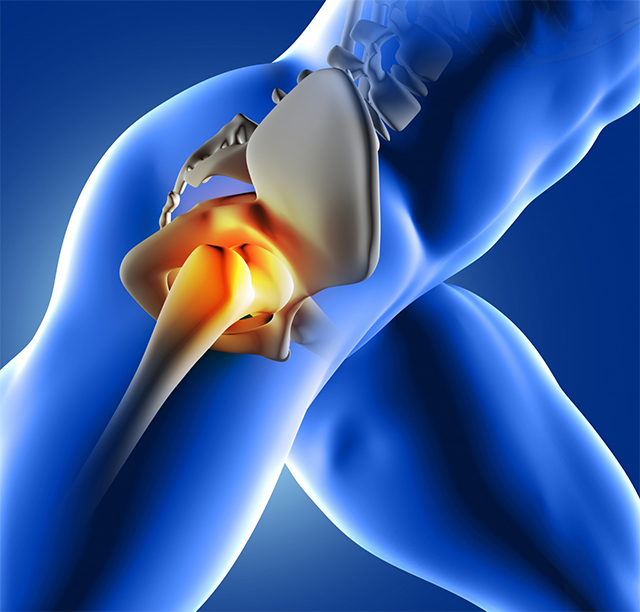Since it was initially performed in the 1960s, hip replacement surgery has seen significant development and improvement. Those who are afflicted with hip pain and mobility concerns might significantly benefit from this operation, which is now considered to be a routine medical practice. Hip replacement surgery has seen a lot of breakthroughs in both technique and technology over the past several years, and Dublin, Ireland, has been at the forefront of all of these developments. In this essay, we will investigate the lessons that can be learned from the breakthroughs that have been made in hip replacement surgery in Dublin. These advancements include novel surgical procedures, implant materials, and rehabilitation approaches. We can obtain insight into the future of hip replacement surgery and how it may continue to improve to give better outcomes for patients if we investigate the advances that have been developed in Dublin.

Definition of hip replacement surgery
Hip replacement surgery, also known as hip arthroplasty, is a surgical process that includes replacing a damaged or worn hip joint with an artificial joint that is referred to as a prosthesis. Hip arthroplasty and hip replacement surgery are both terms that refer to the same medical procedure. Those who suffer from significant hip pain or stiffness that cannot be eased by other forms of treatment, such as physical therapy or medication, are often candidates for this sort of surgery, which is typically advised by medical professionals.
Walking, sitting, and standing all require the use of the hip joint, which is one of the largest weight-bearing joints in the body. Because of this, the hip joint is an extremely important component of daily activity. However, the joint can get damaged over time owing to a variety of circumstances, including age, injury, or disease. This can occur. This can result in pain, stiffness, and a reduction in movement, making it difficult to carry out even the most basic of day-to-day activities.When the damage to the hip joint is serious enough that alternative treatments are no longer effective, hip replacement surgery is typically the next course of treatment considered. The damaged section of the hip joint will be removed during the treatment, and a prosthetic joint will be inserted in its place. The prosthetic joint may be made of materials such as metal, plastic, or ceramic.
Advancements in Hip Replacement Surgery in Dublin, Ireland
In recent years, there has been significant development in the surgical process known as hip replacement surgery. Hip replacement surgery has seen tremendous developments in both its technology and its practices in Dublin, Ireland, which is located in the country of Ireland. Kardiolita, which has proven essential in pushing the frontiers of what is possible in hip replacement surgery, is one of the most well-known brands in this industry.
Surgery for hip replacement is often carried out in order to treat a wide variety of illnesses, including osteoarthritis, rheumatoid arthritis, hip fractures, and other conditions that affect the hip joint. The operation used to be open, but over the years it has been refined into a less invasive technique called minimally invasive surgery, which includes making tiny incisions and has a shorter recovery period.
In Dublin, Ireland, Kardiolita has been at the forefront of these breakthroughs, providing patients with cutting-edge equipment and treatment methods. The utilization of robotic-assisted surgery is among the most significant developments that have been made in hip replacement surgery. This entails the utilization of a robotic arm that is controlled by a surgeon, which subsequently enables increased precision and accuracy while the operation is being performed. The surgeon is able to generate a virtual, three-dimensional model of the patient’s hip joint using robotic-assisted surgery. This enables the surgeon to take a more individualized approach to doing the procedure.
Kardiolita performs both robotic-assisted surgery and minimally invasive surgery, the latter of which includes making smaller incisions and causing less damage to the surrounding tissue. As a consequence, the patient recovers from their injury more quickly and experiences less discomfort. There have been other developments in hip replacement surgery, such as the utilization of 3D-printed implants. These implants are tailor-made for each individual patient and provide a fit that is more natural.
Computer-assisted surgery
A rapidly developing field called computer-assisted surgery (CAS) combines cutting-edge computer technology with conventional surgical methods. This ground-breaking method has gained popularity among both patients and medical professionals due to its many benefits, including increased precision, decreased trauma, and quicker recovery times.
In this innovative field, Vilnius, Lithuania’s Kardiolita Hospital, has been a pioneering medical facility. Kardiolita has made significant investments in cutting-edge tools and technology, including computer-assisted surgical systems, to give their patients the most cutting-edge and potent therapies possible.
Robotic surgery, commonly referred to as computer-assisted surgery, uses robotic devices to help surgeons perform operations. More precision and accuracy are made possible by this technology, improving patient outcomes. The surgeon directs a robotic arm that performs the surgical procedure through the use of a computer console.
Robotic-assisted laparoscopic surgery, which is used to treat ailments including prostate cancer, gynecological disorders, and digestive problems, is one of the computer-assisted surgical treatments available at Kardiolita Hospital. For orthopedic procedures like joint replacements, the hospital also uses computer-assisted navigation devices that enable more accurate and precise implant placement.

The fact that computer-assisted surgery is minimally intrusive is one of its main advantages. Patients heal more quickly and with less pain and scarring when smaller incisions are used. This method is very helpful for individuals having orthopedic surgery because it lowers the possibility of problems and enhances overall results.
The utilization of computer-assisted surgical systems at Kardiolita Hospital has positioned the facility as a pioneer in the area of minimally invasive surgery. For the greatest results for its patients, the hospital’s staff of competent and experienced surgeons uses cutting-edge computer technology.
Impact of advancements in hip replacement surgery on patient care
A hip joint that is injured or infected is removed during hip replacement surgery and replaced with a new, artificial joint. Millions of people all around the world have benefited from this operation for decades, which has helped them regain their mobility and quality of life. Nonetheless, improvements in hip replacement surgery have increased the safety and efficacy of the procedure for patients. This essay will examine how improvements in hip replacement surgery have impacted patient care, with a special emphasis on Kardiolita’s accomplishments as a preeminent joint replacement healthcare provider.
The care of patients has benefited significantly from advancements in hip replacement surgery. In the past, patients who underwent hip replacement surgery ran a high chance of experiencing problems like infection, blood clots, and dislocation. However, the risk of problems has greatly decreased with improvements in surgical methods, better implant materials, and better post-operative care. Now, patients can anticipate shorter hospital stays, quicker recoveries, and better results overall.
With their group of very skilled and knowledgeable orthopedic doctors and cutting-edge facilities, Kardiolita has been at the forefront of these breakthroughs. The application of minimally invasive methods is one of Kardiolita’s most significant contributions to hip replacement surgery. With minimal tissue damage, less discomfort, and a quicker recovery, this method accesses the hip joint through tiny incisions and the use of specialist tools.
The utilization of cutting-edge implant materials by Kardiolita is another significant contribution. The high-quality, long-lasting, and biocompatible materials titanium and ceramic are used to create the hip implants used by Kardiolita. These implants are created to look and work like a real hip joint, giving patients a complete range of motion and a higher quality of life.
Additionally, Kardiolita places a focus on post-operative care with a group of committed physical therapists and rehabilitation specialists.
